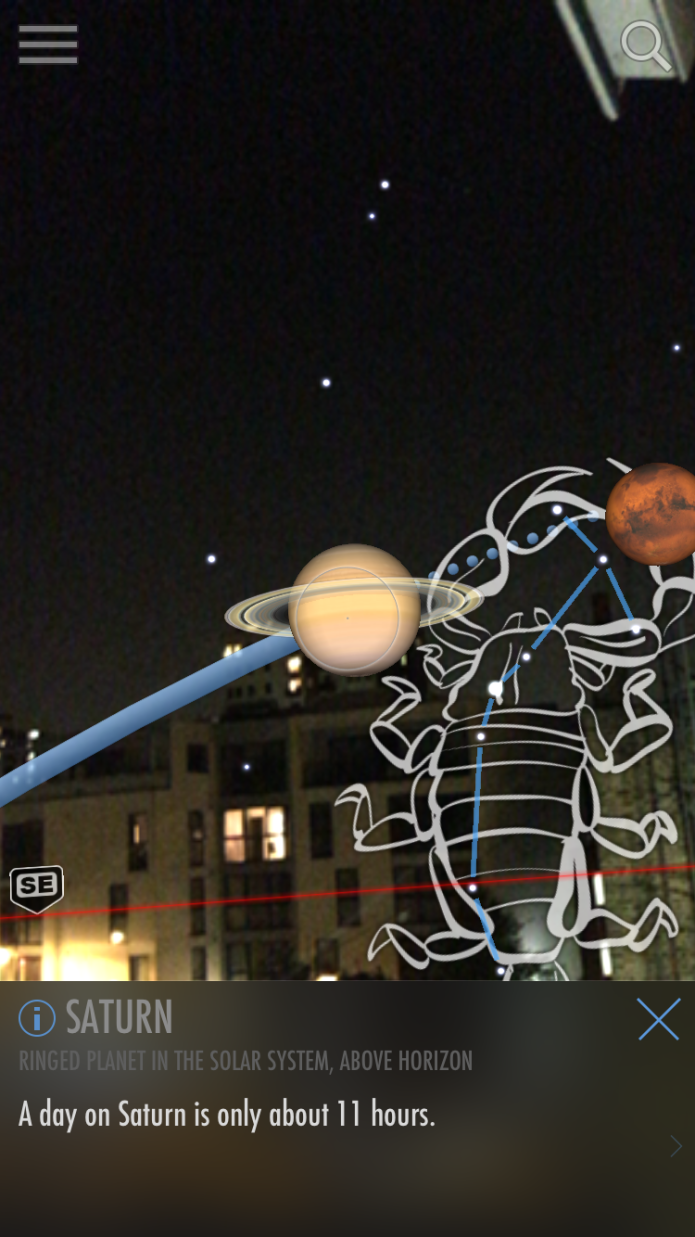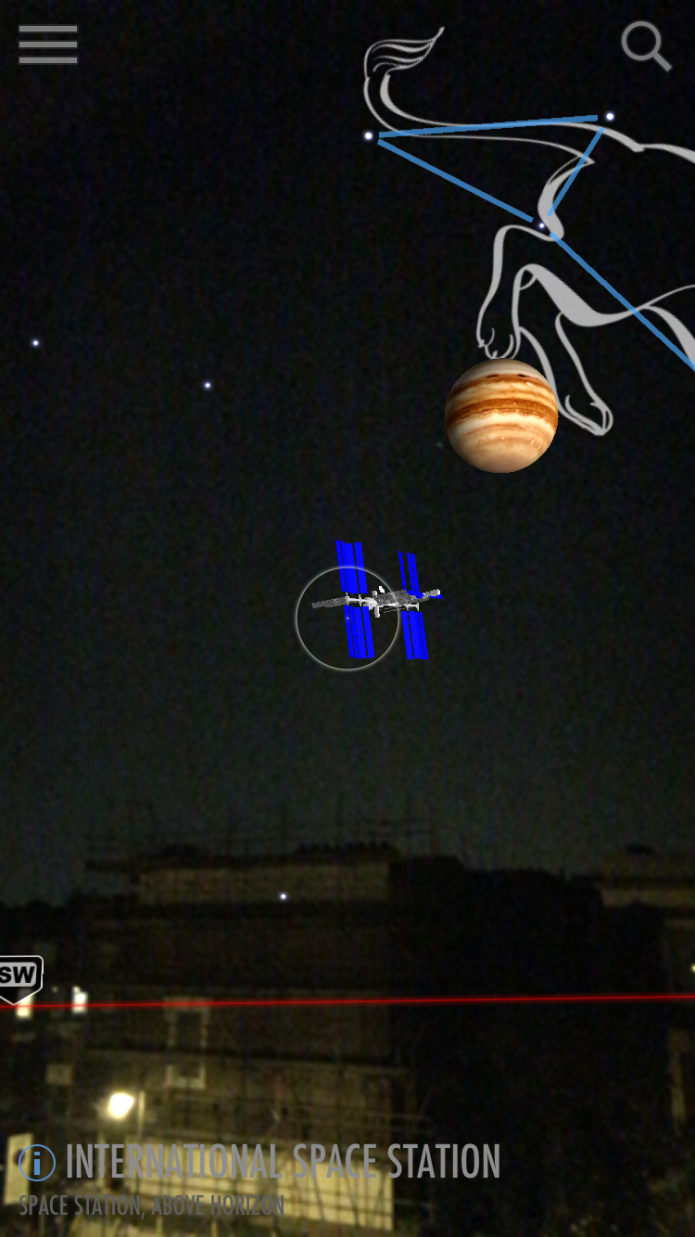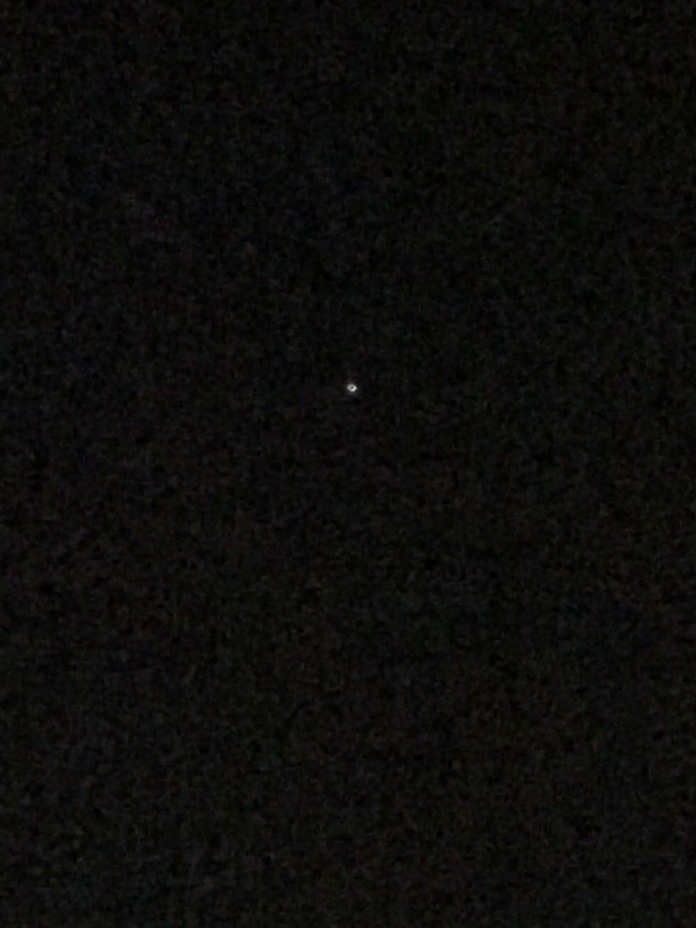This week sees the first step away from plants and right out into the depths of space, with planets. We’ll cover how and when you can spot planets, and the International Space Station, as the Earth orbits through the Solar System.
I had recently signed up to the free email service from NASA, named “Spot The Station” in which you input your geographical location and you’ll receive periodic emails on when is best to look into the sky to spot the International Space Station (ISS), as it flies over the night sky – weather permitting.
Last night, I combined this with my “SkyView Free” app which shows you what is in the sky wherever you point your smartphone. Very nifty.
Whilst I did see the International Space Station, it’s the above image that really grabbed my attention. I noticed a tiny dot in the sky and pointed my phone at it – Saturn was in visible range (sadly Mars, to its right, was not visible). To make that more understandable, below is the image taken away from the app.
You can just about make out Saturn in the night sky, even with all the interfering light from London. I decided I needed a closer look so I carefully zoomed in and snapped again.
Now you can really see Jupiter, but how can I be sure?
I carefully zoomed into the image once again and had to screenshot the picture, apologies for the low quality image.
Now I was certain – you can even make out Saturn’s rings! Although I feel the above is the best pic of the bunch, I did also grab the below image but this is very low quality.
You’ll have a much better experience if you live outside of London. (Or, quite plainly, if you own a telescope.) But I thought it was important to share this with those who perhaps are novice at sky watching and who didn’t know it were possible to view the sky’s with a smartphone.
I had intended to video the ISS flying over but the smartphone camera made the image too dark to capture, so I only have several images like that below.
Here is the image taken away from the app (sadly, zooming did not make this image any clearer).
Jupiter was also vaguely visible but as you see below, this appears as just a faint dot no matter how much you zoom.
Not ground breaking stuff I know – but remember this is just for anyone who is a novice sky-watcher with a smartphone.
So, to recap, you can see it for yourself with the following steps:
- Sign up to the email service Spot the Station (if you want to view ISS fly over – it moves fast! About 6 mins visiblity every 1hr 37mins.)
- Download SkyView Free app which is available on iOS devices (unsure about others)
- Wait for a clear night sky, point your smartphone and enjoy the show.
There is also an app I’d recommend (but you must pay – £3.99 I think I paid) called GoSkyWatch and it’s a more detailed view of the skies, but you cannot see through your camera view so matching with your eye can be difficult.
It’s a fun and simple way to check out the skies quickly, kids will love this too, and you’ll get to learn the constellations and planets in no time!









I have been surfing on-line greater than 3 hours as
of late, but I by no means discovered any interesting
article like yours. It’s lovely value enough for me.
Personally, if all website owners and bloggers made good content as you did, the
internet will probably be a lot more useful than ever before.
LikeLike
You are very welcome!
LikeLike